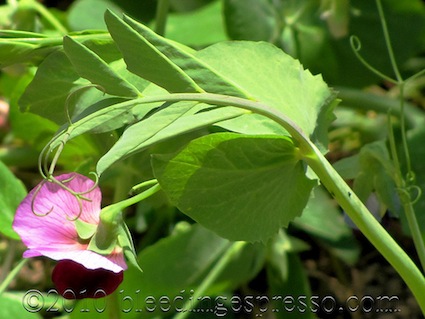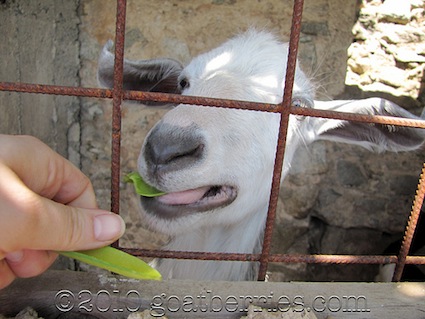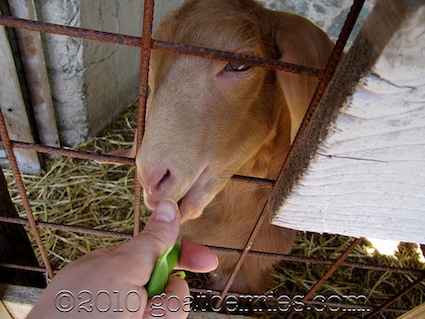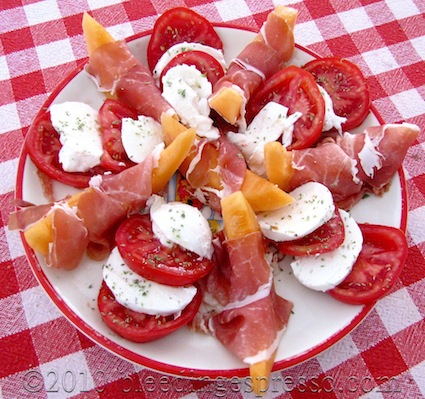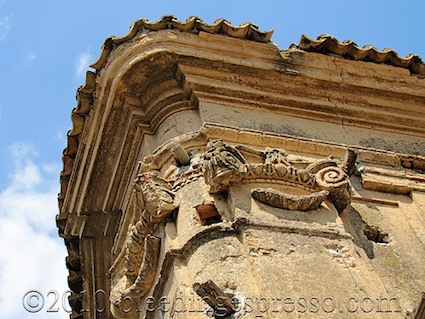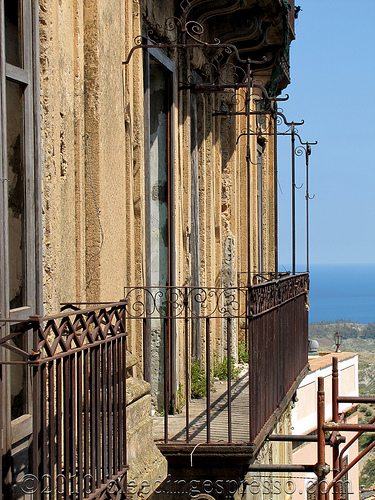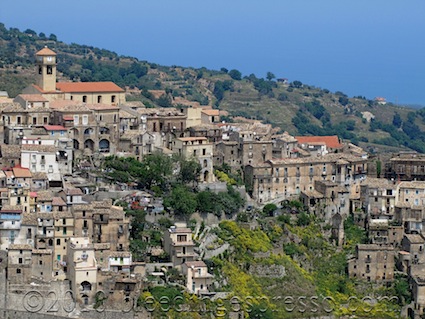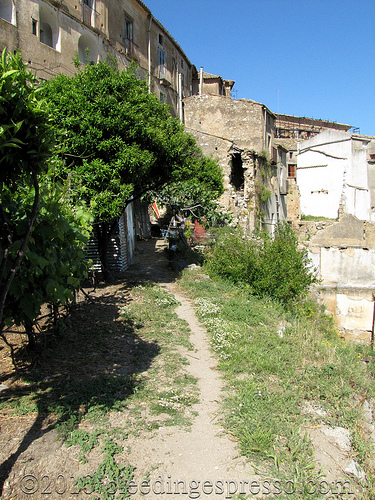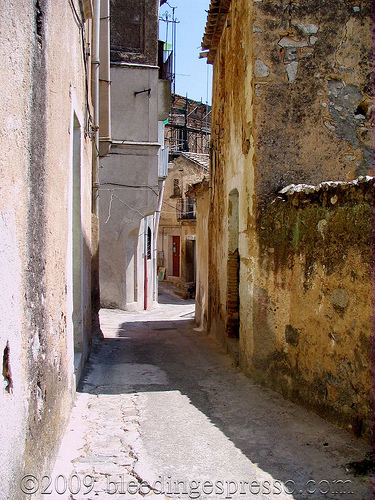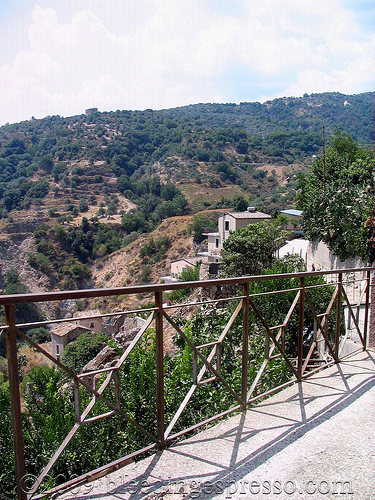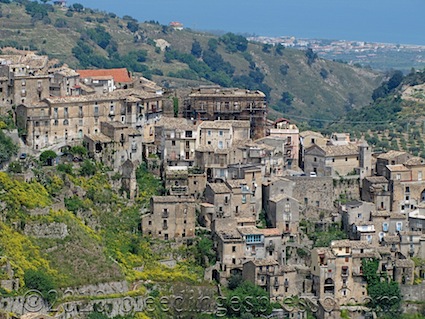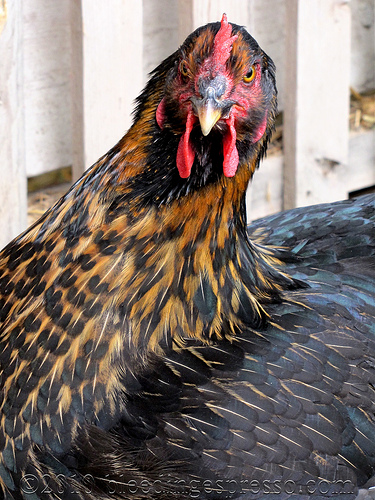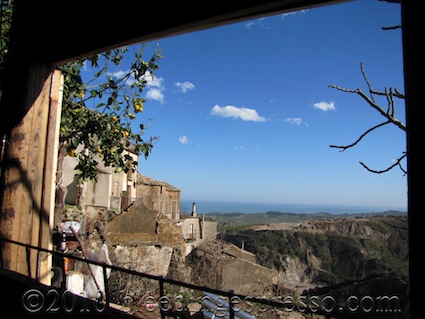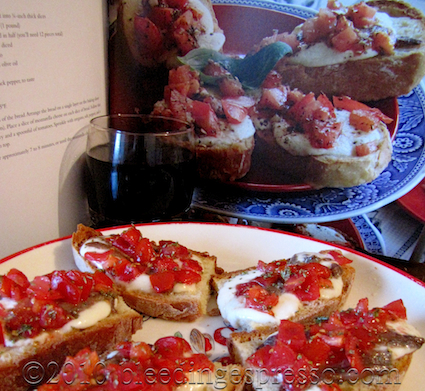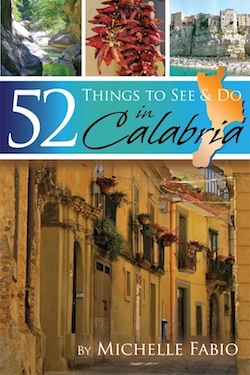Archive for 2010
Calabrian Peas Fresh from the Garden
Remember when I shared Judy Witts Francini’s recipe for Piselli alla Fiorentina from her wonderful cookbook Secrets from My Tuscan Kitchen? I had to use frozen peas for that dish because ours weren’t ready yet . . . but then they got ready. And man do I love fresh peas from the garden.
Peas are even gorgeous as plants, aren’t they? Such pretty flowers!
I know the goats agree, and although I’m sure they’d love to munch on the peas at any stage of growth, they usually just get the pods once we’ve removed the peas.
And they love ’em!
If you’ve been following along at Goat Berries, you know that these photos are from a few weeks ago as we no longer have the goats pictured above. *sigh*
But we still have Pasqualina and Pinta, and they both love the pea pods too (and fava pods if you got ’em) . . . as I also wrote on Goat Berries, we now even get gift bags of pea and fava pods left in front of our door just for the girls!
I don’t have to tell them twice to eat their veggies!
Come back Wednesday for another great fresh pea recipe — this time with pasta!
What’s growing in your garden right now?
Prosciutto e Melone, Caprese Salad, and Palazzo Paparo
We’re enjoying absolutely gorgeous weather here today in the toe of the boot, which often means a quick, cold lunch like this one:
Prosciutto Crudo e Melone and a pseudo-Caprese Salad — this time with oregano because I didn’t have any basil, but hey oregano is still green, so the whole “colors of the Italian flag” thing still works.
Grab a chunk of Italian bread and a glass of red wine and head out onto the balcony, and all is right with the world…especially now that the old palazzo of Baron Paparo across the street from us is being freed of its scaffolding (previously attached to our house, for the past 10 years!).
I’ll be following up on this palazzo, by the way, taking some photos, posting them here, and hopefully sparking interest in wealthy investors who would like to help us (the town) restore the palazzo to its former grandeur. The first time I walked inside, I felt like I was in a scene from Titanic, when you see the ship underwater but then it magically transforms into what it *used* to be…. *le sigh*
In the meantime, if you know of anyone who might be interested, let me know! I know it would mean the scaffolding would have to go back up, but it would be *so* worth it.
Hope you’re enjoying your weekend too!
Cavolfiori al Forno – Baked Cauliflower
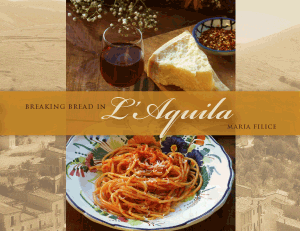 Are you on the edge of your seats wondering who will win a copy of Breaking Bread in L’Aquila by Maria Filice? Well you’ll have to wait just a wee bit longer . . . you can enter the drawing until Thursday, May 20th at 11:59 p.m. CET and then I’ll announce the winner on the Bleeding Espresso Facebook page and also tweet it via @michellefabio (and contact the winner, of course).
Are you on the edge of your seats wondering who will win a copy of Breaking Bread in L’Aquila by Maria Filice? Well you’ll have to wait just a wee bit longer . . . you can enter the drawing until Thursday, May 20th at 11:59 p.m. CET and then I’ll announce the winner on the Bleeding Espresso Facebook page and also tweet it via @michellefabio (and contact the winner, of course).
P.S. Remember to also join in the contest over at She Who Blogs, where you can read an interview with me *and* enter to a win a signed copy of Mary Amabile Palmer’s Cucina di Calabria!
For now, I’m going to share my adaptation of another of Maria’s wonderful recipes; last week was the recipe for the best crostini ever and this week we’re playing with cauliflower.
I don’t know about you, but I love cauliflower . . . I just get so *bored* with how to make it. And please don’t tell me to mash it up like potatoes. P will barely eat mashed potatoes as it is; I’m not about to risk losing our twice a year mashed potato splurge because of a cauliflower dish gone wrong. Anyone who has cooked for a picky eater knows where I’m coming from on this, right?
Needless to say, I was excited when I saw Maria’s “Cavolfiori al Forno” recipe for baked cauliflower. Fast, easy, delicious, and pretty darn healthy to boot . . . just like we like it around here!
Cavolfiori al Forno – Baked Cauliflower
from Breaking Bread in L’Aquila by Maria Filice
(as adapted by me)
- 1 large cauliflower, cut into florets
- Salt for blanching cauliflower
- 1 clove garlic, cut into two or three pieces*
- 1/4 cup of unseasoned bread crumbs**
- Chopped parsley to taste
- 1/2 to 3/4 cup of freshly grated parmigiano cheese
- 3 tablespoons olive oil
- Salt and black pepper to taste
1. Preheat oven to 375°F (190°C).
2. Fill a large pot about halfway with water and bring to a boil.
3. Add two tablespoons of salt and cauliflower. Boil for 5 minutes and remove cauliflower with a slotted spoon.
4. While the cauliflower is boiling, prepare a bowl with the garlic and olive oil. Add the cauliflower and mix to cover it, then transfer the cauliflower (leaving the garlic behind) to a baking dish.
5. In a small bowl, combine bread crumbs, parsley, and cheese. Spread evenly over cauliflower and season with salt and pepper to taste.
6. Bake uncovered for about 8 minutes; remove and move around cauliflower a bit. Bake for another 8 minutes or so, or until golden. Serve warm.
Buon appetito!
* The original recipe calls for minced garlic, but I found this to be a little too garlicky for my taste, so I left the garlic in bigger pieces for us the next time and really enjoyed it. Feel free to experiment.
** I think you could also go seasoned, or alternately, add a little onion and garlic powder (instead of adding the garlic) ala my veal cutlets. I’m going to try this next time.
The Lay of the Land in Calabria
The physical layout of life in a medieval hilltop village in southern Italy is often hard to grasp — especially for people who haven’t been here — so I’m going to try to explain it.
As I’ve written before, many medieval villages up on the hills have counterpart towns on the sea; we’re up on the hill, where houses are very close to one another, often touching. This is about a quarter of Badolato (our quarter, as it were) with the Ionian Sea in the background:
Around the outskirts of town, there are small green patches where people have their gardens, even animals. Most of them are places where houses used to be but have fallen or otherwise been compromised, but any time you can get just a little “orto” near your house, you’ve scored.
Last year, P and I secured a small chunk of land very close to our house (it’s about a 30 second walk), but it’s not like a “yard” that some might imagine.
There are actually two levels to it; one you can see below and the other is just off to the side of this, a few steps down to the right, and is where we plant veggies. You can see the chicken coop and goat pen on the left. The house with the big hole in it? Not ours. You can actually see our bedroom window, though…that brown squarish thing just to the left of the whitish house? I have it in a note on Flickr if you click through:
To give you an idea of the distance, here is a photo taken about half way between our house and the entrance to orto, looking toward the house (the last house on the right — it’s on a corner, and yes I know it needs paint, badly):
This photo overlooks the beginning of the garden (you can see the tops of our trees just past the iron railing), although the entrance is another twenty or so paces away:
And here is a photo from the outside looking in; I’ve labeled it on Flickr with notes (click on the photo to go there) so you can see where we live compared to where the goats live in our orto:
We also keep some chickens and hens there:
Our orto has a lemon tree, a couple mandarin trees, a nespole tree, a fig tree, a small grapevine, and we also plant various crops there, including lettuce, tomatoes, onions, cucumbers, peas, peperoncini, basil, and this year…strawberries!
And here is the view from our orto (from inside the goat pen):
This was taken a couple months ago, so those branches you see on the right are now full of fig leaves and the beginnings of some fruit.
So as you can see, it’s a nice little space that produces plenty for the two of us — actually way more than we need so we end up giving to friends and neighbors, and often get things in return that we haven’t grown yet, like zucchini and eggplants and also all kinds of pork products since we don’t have a pig. Yet.
Are you wondering about olives and olive oil? Well, there’s also some unofficial news on that, but it’s going to have to wait for another post.
Phew. Any questions?
Best Crostini Recipe Ever + Breaking Bread in L’Aquila
 Maria Filice‘s Breaking Bread in L’Aquila is a product of love — love for her late husband Paul Piccone, of his native city L’Aquila in Abruzzo (yes, the same one that was devastated by an earthquake last year), of her own Calabrian heritage (Marie’s parents were born in Cosenza), and of delicious, simply prepared Italian food.
Maria Filice‘s Breaking Bread in L’Aquila is a product of love — love for her late husband Paul Piccone, of his native city L’Aquila in Abruzzo (yes, the same one that was devastated by an earthquake last year), of her own Calabrian heritage (Marie’s parents were born in Cosenza), and of delicious, simply prepared Italian food.
Marie graciously shares this amore with us, and indeed, is donating net proceeds of the book to the continuing relief efforts in Abruzzo and is also appearing in Santo Stefano di Sessanio, Abruzzo this Saturday, May 15, if you’re in the neighborhood!
The layout of this hardcover book is gorgeous with the recipes on the left side and full-color photos on the right — for each and every recipe. And the organization is unique as well: recipes are divided into menus that include antipasti (appetizers), primi piatti (usually pasta), secondi piatti (meat), contorni (vegetables), and dolci (desserts) for each day of the week; if you have a special dinner coming up, you can just open up Maria’s book and have a menu all set. Perfetto!
Many of Maria’s 50 or so recipes are classics like aglio olio peperoncino and bruschetta, but there are also some that were new to both Paolo and me. On my first run through, I made a note of at least five different recipes to try immediately with things we already had in the house.
In case you don’t realize, that’s pretty darn impressive for a southern Italian cookbook in a southern Italian house.
Speaking of items we had on hand, Maria also includes the “Pantry Page” with a checklist of things you should always keep handy. That stocked pantry is one of the most important parts of true Italian cooking, i.e., deciding what’s for dinner based on what you have on hand, and even better, having it on the table within about an hour. *That* is an Italian art form, and Maria has captured its essence wonderfully.
Breaking Bread in L’Aquila would be an excellent addition to any cookbook collection as it is not only full of great recipes, it’s simply a gorgeous book. Even if you don’t cook, you’ll enjoy the photos! And if you need a gift, particularly for someone with an interest in Italian and/or southern Italian cuisine, this is perfect.
I give this cookbook five extremely full espresso cups out of five; I couldn’t recommend it more.
**THIS CONTEST IS OVER**
Maria is offering up a copy of Breaking Bread in L’Aquila to one lucky Bleeding Espresso reader. Just comment on this post by May 20, 2010 at 11:59 p.m. (CET) to enter.
Now, without further ado, Maria’s recipe for Crostini with my slight adaptations; I am not exaggerating when I say I’ve made these at least once a week since I received Maria’s book (on Paolo’s specific request). We’ve had them as afternoon snacks and as dinner. They are so, so, so good — especially with a nice glass of red wine.
Crostini from Breaking Bread in L’Aquila by Maria Filice
(as adapted by me)
(serves 2)
- 6 slices of Italian bread, about 1/4 inch thick
- 2 small to medium-sized balls of fresh mozzarella, sliced
- 6 anchovy fillets
- 2 medium tomatoes, diced
- Handful of capers
- 1 tablespoon olive oil
- Oregano and salt to taste
1. Preheat oven to 375°F (190°C).
2. In a small bowl, mix together tomatoes, olive oil, oregano, and salt. Let stand while you arrange the rest.
3. Arrange slices of bread in a single layer on a baking sheet.
4. Place a slice or two of mozzarella on the bread so that you cover most of it.
5. Put an anchovy fillet on each slice of bread (more if you like anchovies like we do!).
6. Add some capers to each slice (I put three or four on each slice — we like capers too).
7. Cover the slices with the tomato mixture. I’ve found a fork actually works better than a spoon for this; you don’t want a whole lot of liquid making it onto the crostini as it’ll make the bread soggy.
8. Sprinkle with more oregano.
9. Bake in the oven for about 7 or 8 minutes, or until cheese melts.
10. Serve immediately, preferably with a glass of red wine.
Buon appetito!


